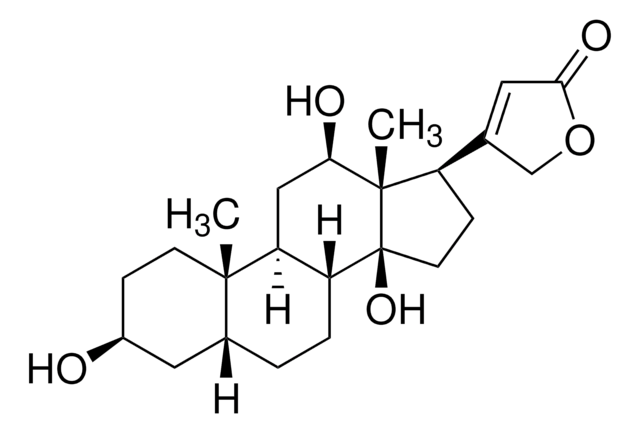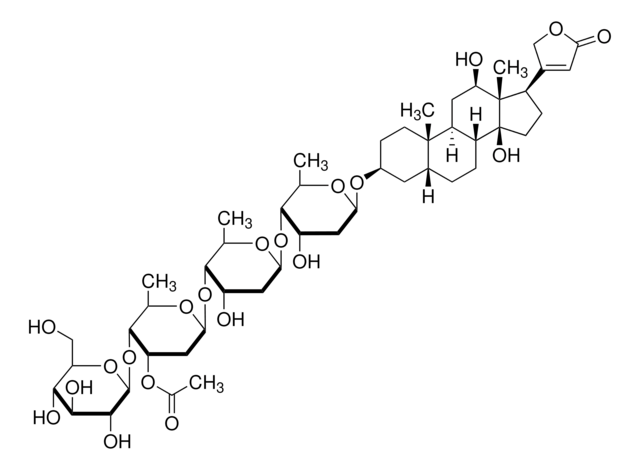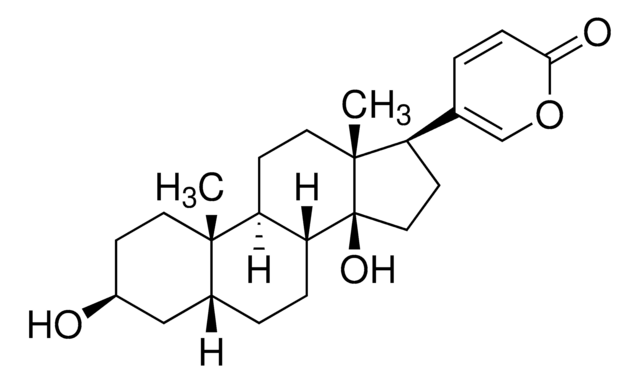D9404
Digitoxigenin
Synonym(s):
3β,14-Dihydroxy-5β,20(22)-cardenolide, 3,14,21-Trihydroxy-20(22)-norcholenic acid lactone, 5β,20(22)-Cardenolide-3β,14-diol
About This Item
Recommended Products
description
non-ionic
Assay
≥97.0% (TLC)
form
powder
mol wt
374.51 g/mol
mp
253 °C (lit.)
SMILES string
[H][C@]12CC[C@]3([H])[C@]([H])(CC[C@]4(C)[C@]([H])(CC[C@]34O)C5=CC(=O)OC5)[C@@]1(C)CC[C@H](O)C2
InChI
1S/C23H34O4/c1-21-8-5-16(24)12-15(21)3-4-19-18(21)6-9-22(2)17(7-10-23(19,22)26)14-11-20(25)27-13-14/h11,15-19,24,26H,3-10,12-13H2,1-2H3/t15-,16+,17-,18+,19-,21+,22-,23+/m1/s1
InChI key
XZTUSOXSLKTKJQ-CESUGQOBSA-N
Gene Information
rat ... Atp1a1(24211)
Looking for similar products? Visit Product Comparison Guide
General description
Application
Signal Word
Danger
Hazard Statements
Precautionary Statements
Hazard Classifications
Acute Tox. 2 Oral
Storage Class Code
6.1A - Combustible acute toxic Cat. 1 and 2 / very toxic hazardous materials
WGK
WGK 3
Personal Protective Equipment
Certificates of Analysis (COA)
Search for Certificates of Analysis (COA) by entering the products Lot/Batch Number. Lot and Batch Numbers can be found on a product’s label following the words ‘Lot’ or ‘Batch’.
Already Own This Product?
Find documentation for the products that you have recently purchased in the Document Library.
Customers Also Viewed
Our team of scientists has experience in all areas of research including Life Science, Material Science, Chemical Synthesis, Chromatography, Analytical and many others.
Contact Technical Service










